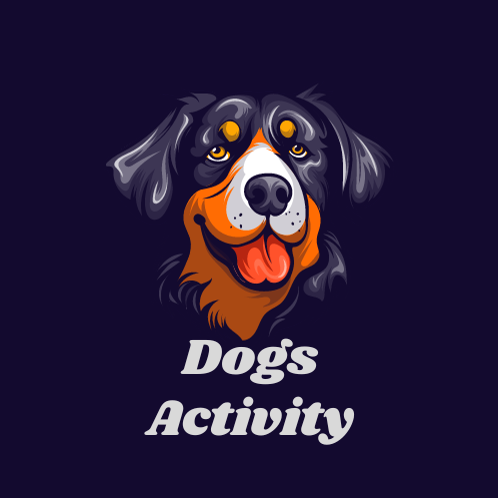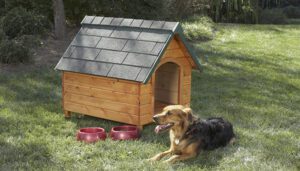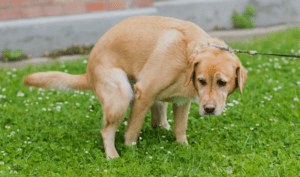Understanding your dog’s digestive system is essential for maintaining their overall health and well-being. While every dog is unique, they generally follow a similar digestive process. As a responsible pet owner, it’s crucial to be aware of the timing between meals and bathroom breaks, especially after your dog has eaten. This article will delve into the intricacies of your dog’s digestive system and provide guidance on how long you should wait to take your dog out to poop after eating to promote their comfort and prevent digestive issues.
Understanding Your Dog’s Digestive Process
Your dog’s digestive system plays a vital role in processing the food they consume and extracting the necessary nutrients for energy and overall health. The primary stages of a dog’s digestive process include the following:
- Ingestion: This is the initial stage when your dog consumes food, which is broken down into smaller pieces through chewing and saliva.
- Stomach Digestion: Once the food reaches the stomach, it is mixed with stomach acids and enzymes, breaking down proteins and other nutrients.
- Small Intestine Absorption: The partially digested food moves into the small intestine, where most of the nutrient absorption takes place. The nutrients are then transported to the bloodstream.
- Large Intestine Absorption and Waste Formation: The remaining undigested food moves to the large intestine, where water is absorbed, and waste products are formed into feces.
- Defecation: The feces move to the rectum, and when it’s time for elimination, the muscles of the colon contract, pushing the feces out through the anus.
The duration of each stage can vary based on factors such as your dog’s breed, age, size, overall health, and the specific composition of the meal they consumed. Understanding the timing of this process can help you determine when it’s appropriate to take your dog out to poop after they’ve eaten.
Factors Affecting the Time to Poop After Eating
Several factors influence the time it takes for a dog to poop after eating. It’s important to consider these factors to ensure that your dog has a comfortable and healthy digestive experience. Some of the key factors include:
- Type of Food: The type of food your dog consumes can significantly impact their digestive process. Different types of diets, such as dry kibble, wet food, raw food, or homemade meals, can lead to varying digestion times.
- Portion Size: The portion size of the meal also plays a role in how long it takes for your dog to digest the food. Larger portions may require more time to process, while smaller meals might move through the digestive system more quickly.
- Feeding Schedule: Establishing a consistent feeding schedule helps regulate your dog’s digestive rhythm. Dogs tend to develop a routine around their meal times, which can influence the timing of their bathroom breaks.
- Age and Health: Older dogs or those with specific health conditions may experience changes in their digestive patterns. Some health issues can lead to slower digestion or irregular bowel movements, affecting the timing of when they need to eliminate.
- Physical Activity: Regular exercise can stimulate digestion and help your dog maintain a healthy bathroom routine. Dogs that engage in frequent physical activity may experience faster digestion and more regular bowel movements.
Understanding these factors can provide valuable insights into your dog’s digestive process and help you determine the ideal timing for taking your dog out to poop after they’ve eaten.
Timing Considerations for Taking Your Dog Out to Poop
While there is no one-size-fits-all answer to how long you should wait to take your dog out to poop after eating, certain guidelines can help you determine the appropriate timing based on your dog’s individual needs. Consider the following factors when determining the best time for a bathroom break after your dog has eaten:
- Meal Size: The size of the meal can influence the timing of your dog’s bathroom breaks. Larger meals generally require more time to digest, so it’s advisable to wait at least 30 minutes to an hour before taking your dog out to poop after a larger meal.
- Type of Food: Different types of food can impact digestion differently. Some diets, such as high-fiber or raw food diets, can lead to quicker digestion, while others, such as high-fat diets, may slow down the digestive process. Consider the specific characteristics of your dog’s diet to determine the appropriate timing for bathroom breaks.
- Feeding Schedule: If you have established a consistent feeding schedule for your dog, you may notice a pattern in their bathroom routine. Pay attention to when your dog typically needs to eliminate after eating and plan bathroom breaks accordingly.
- Regular Exercise: Engaging in regular exercise can help stimulate digestion and encourage more timely bowel movements. Taking your dog for a walk or play session shortly after they’ve eaten can help promote a faster digestion process and may prompt them to poop more quickly.
- Age and Health: Older dogs or those with health conditions may require more time to digest their food properly. Be mindful of your dog’s age and any existing health concerns when determining the timing for bathroom breaks after meals.
By considering these factors, you can develop a better understanding of your dog’s unique digestive needs and establish a suitable routine for taking them out to poop after they’ve eaten.
Tips for Maintaining a Healthy Digestive System
Maintaining a healthy digestive system is essential for your dog’s overall well-being. To help support your dog’s digestion and promote regular bowel movements, consider the following tips:
- Provide a Balanced Diet: Ensure that your dog’s diet is well-balanced and provides the necessary nutrients for their overall health. Consult with your veterinarian to determine the best diet for your dog based on their breed, age, and specific dietary needs.
- Establish a Consistent Feeding Schedule: Set a consistent feeding schedule that aligns with your dog’s natural digestive rhythm. Regular meal times can help regulate your dog’s bathroom routine and support healthy digestion.
- Monitor Water Intake: Ensure that your dog has access to fresh water throughout the day. Proper hydration is essential for maintaining a healthy digestive system and preventing constipation.
- Encourage Regular Exercise: Engage your dog in regular exercise to promote healthy digestion and encourage timely bowel movements. Physical activity can help stimulate the digestive process and support a healthy bathroom routine.
- Consult Your Veterinarian: If you notice any changes in your dog’s digestion or bathroom habits, consult your veterinarian for guidance and advice. Regular check-ups can help identify any potential digestive issues and ensure that your dog maintains a healthy digestive system.
Conclusion
Understanding your dog’s digestive system and the factors that influence digestion can help you determine the appropriate timing for taking your dog out to poop after they’ve eaten. By considering meal size, type of food, feeding schedule, regular exercise, and your dog’s age and health, you can develop a tailored approach to support your dog’s digestive health. Paying attention to your dog’s individual needs and maintaining a consistent routine can help promote a healthy digestive system and ensure that your dog remains comfortable and happy.



